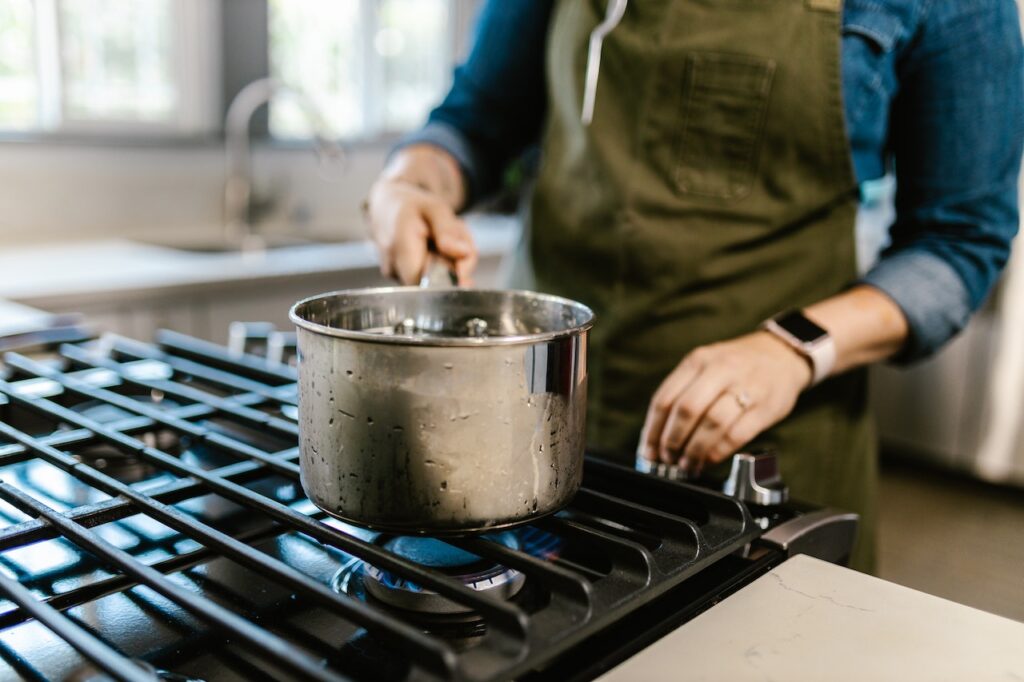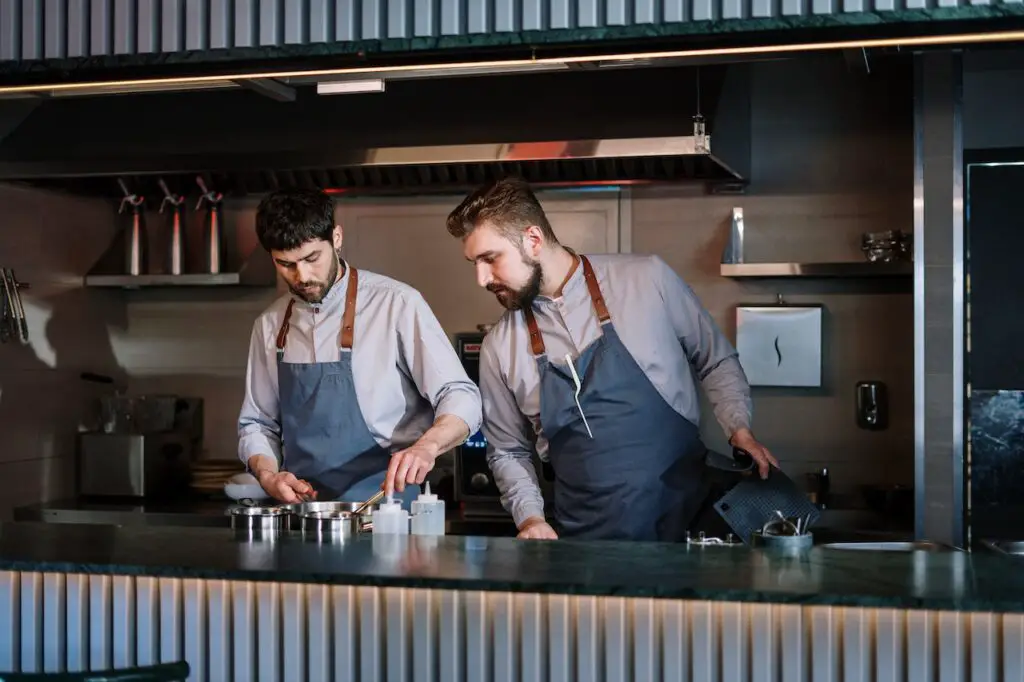As an Amazon Associate we earn from qualifying purchases.
When you begin cooking food sous vide, it can be a bit of a challenge. If you have recently tried cooking with vacuum bags and water, you might be concerned about how to keep the bag secure. Can a sous vide touch the bottom? Get to know how to follow the process for the best results.
Quick Navigation
Can a Sous Vide Touch the Bottom?
Sous vide bags must remain submerged in water, and yes they can touch the bottom. Since food cooked sous vide is submerged in water and water is such a great conductor of heat, the food will still come to temperature as even the area below the sous vide tub will heat to about the temperature of the water.

If you are using a stick model precision cooker, like an Anova, then your heating element will be well shielded from the bag touching it.
A Floating Sous Vide Bag Is Not Right
While a plastic bag touching the bottom of the container is not harmful, a floating bag means that the vacuum seal was incomplete and air remains in the bag. Air works as an insulator and is a poor conductor of heat, meaning your food will cook slower and unevenly if there is air in the bag. It is critical that you ensure that the bag remains submerged.
A floating bag rarely happens with vacuum sealers and is more common when using the “submerge” method and Ziplock bags. To ensure you are forcing all the air out of the bag when you submerge it, you will want to massage and move air bubbles out towards the top of the bag where they can be removed.
Can a Sous Vide Touch the Sides of the Container?
Yes, the sous vide can touch the sides of the container or the bag, but it is better that it doesn’t. This is because most precision cookers have water inlets and outlets on the sides from where the water circulates in the container.
If you place the bag leaning on the wall of the container, it might block one of the inlets or outlets. Moreover, at the point where the water comes out and touches the bag, the temperature may be slightly higher.
The main idea of sous vide cooking is that the temperature remains uniform all around and inside the bag so that the food in the bag cooks evenly. While touching the sides is not harmful to cooking, it may not allow water to circulate around it freely.
Sous Vide for Convenience
While the bag must get heat from all sides, it is not critically harmful to let the bag rest at the bottom of the pot or even touch the sides. Just make sure water still has a path around the food, the water is fully preheated, and your cook time is sufficiently long to make up for any cold spots.
This makes the process convenient for people because they do not have to watch the food as it cooks. Moreover, since the temperatures are low, you don’t have to worry about food getting overcooked. Many people have turned to this method of food preparation for different kinds of foods, such as
- Beef steaks
- Chicken filets
- Turkey or another kind of meats
- Vegetables
- Eggs
- Purees and sauces
As long as there is no direct heat going into the bag, you should be okay. The sides of the cooking vessel will come up to the same temperature as the water. And as long as the water is circulating, there shouldn’t be any hot or cold spots.
The Use of a Towel Under the Container
Many people may use a towel or cloth under the container. This is to provide extra insulation for the sous vide. If you are cooking on a large cold stone or metal counter that will suck heat out from your water bath, putting a towel, pot holder, trivet, or styrofoam will help insulate the bottom of your sous vide from losing heat.
Insulating your sous vide will use less energy and decrease the amount of time to preheat your water. All this goes to say, you can cook faster and more efficiently.

Cooking With Multiple Bags in the Container
If there is more than one plastic bag or silicone bag in the container, ensure they do not touch one another or the immersion heater. Any hot or cold spot on the bag can negatively impact your results. If cooking large numbers of bags, they actually make special racks for your sous vide container to keep food separated and ensure water flow.
Related Questions
Here are some of the most common questions I see about sous vide cooking and the potential pitfalls of poor bag management. Take a look below so you know exactly what to do when sous vide cooking your next meal.
Can Sous Vide Rest on the Bottom?
Yes, the plastic bag will not get any harmful effects from resting at the bottom. However, the cooking method specifies that the bag is surrounded by water on all sides. You should try to suspend the bag freely. However, if it touches the sides or bottom of the container, it will not pose any danger and will not spoil the results.
Do I Have to Supervise This Cooking Process?
No, you can leave the sous vide all day unattended. When using this technique, it does not cook at high temperatures and takes hours to complete. When using the sous vide process, you do not have to stir or mix anything, so there is no need to stand around.
What Is the Danger Zone for Sous Vide?
The products prepared through this cooking method must be specifically heated, cooled, and reheated. Ensure you do not leave the cooked food in the temperature danger zone of 41 degrees Fahrenheit to 135 degrees Fahrenheit. This temperature range can cause bacteria growth, which can cause food poisoning.
Conclusion
Can a sous vide touch the bottom? If you are new to this method of cooking, you would want to know all about it so that you can use it to create healthy and flavorful meals. Since no direct flame is involved in this process, the vacuumed bag can touch the bottom or sides of the container without harming the food.
